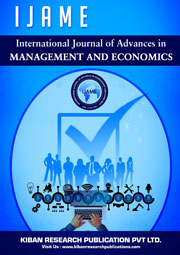FARM AND NONFARM EMPLOYMENT IN RURAL INDIA: TRENDS, SECTORAL COMPOSITION, AND QUALITY OF WORK (2011–2024)
Abstract
In the past few decades, India's rural labor market has undergone significant structural transformations, reflecting broader economic changes and evolving employment patterns. This paper investigates the sectoral distribution and quality of employment among rural workers in India, focusing on the subsectors within agriculture, classified under the 2-digit National Industrial Classification (NIC). By analyzing data from the 2011-12 National Sample Survey Office (NSSO) Employment and Unemployment Survey (EUS) and the Periodic Labour Force Survey (PLFS) from 2017-18 to 2023-24, the study found that workers share in agriculture declined from 63.3 percent to 57.6 percent, while those in non-agricultural sectors rose from 36.9 percent to 42.4 percent between 2011-12 and 2023-24. Male workers are increasingly moving towards non-agricultural jobs, whereas female workers still predominantly remain in agriculture. However, recent years have witnessed a noticeable rise in female participation in the sectors of health, education, and trade, indicating a gradual diversification. Additionally, younger and prime-age workers exhibit more mobility and a stronger preference for nonfarm employment compared to older workers. Higher education levels are correlated with an increased likelihood of entering nonfarm jobs. Within the rural nonfarm categories, the leading sub-sectors include manufacturing, construction, and wholesale and retail trade. In the agricultural sector, a significant portion (approximately 73 percent) of workers are self-employed, highlighting the dominance of own-account and unpaid family labor. These trends highlight the urgent need for targeted rural employment policies that aim to enhance jobs, especially in nonfarm sectors, and increase productivity and quality of employment across both sectors.
Keywords: Rural employment, Sectoral composition, Farm and Nonfarm, Quality of work.
JEL Codes: J01, J21, J43, E24

